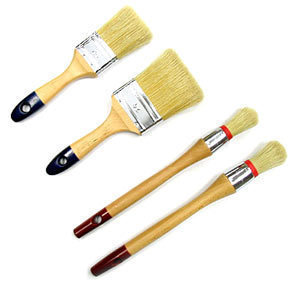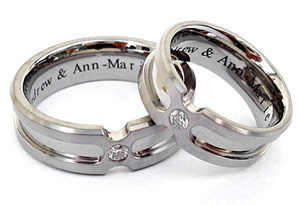Brush Sizes
Brush sizes are very diverse. The dimensions of art  brushes commence at 10/0, 7/0 then 6/0, 5/0, 4/0, 000 and up to 00, 0, 1, 2 and so on. The higher numbers denote a wider or bigger brush. However, these sizes are for art brushes only.
brushes commence at 10/0, 7/0 then 6/0, 5/0, 4/0, 000 and up to 00, 0, 1, 2 and so on. The higher numbers denote a wider or bigger brush. However, these sizes are for art brushes only.
Decorator Brushes
The sizes of these brushes are set in mm or inches. They are ? in, ¼ in, ? in, ½ in, ? in, ¾ in, ? in, 1 in, 1¼ in, 1½ in, 2 in, 2½ in, 3 in, 3½ in and 4 in. In mm they are 10 mm, 20 mm, 40 mm, 50 mm, 60 mm, 70 mm, 80 mm, 90 mm and 100 mm.
Definition and Application
The term brush denotes any device that has wire, bristles or filaments. These are used in various applications, from surface finishing, painting, make up, cleaning and many other tasks. Brushes can be configured in many ways including disks, cylinders, twisted-in wire and anchor set.
Cleaning Brushes
The cleaning brush size varies. Some are no bigger than a toothbrush, while the deck brushes are 36inches long. Small brushes can be used for tidying small crevices and cracks. The larger cleaning brushes are used to clean floors.
Cleaning brushes can be used to remove dirt from figurines and displays. Using a dust pan, they can eliminate debris and dirt off surfaces. There are also special cleaning brushes for glass, tiles and food.
Artist Brushes
These brushes have short handles. They are used for ink or watercolor painting. Some artists have long handles; these are used for acrylic paint. Art brushes are distinguished by the tip. The flat tip is for applying paint uniformly and quickly over the canvas or other painting surface. Round tightly packed tips are used to apply detail.
Bright or flat brushes have short stiff bristles. These are used for putting paint in the canvas weave. They can also be used for painting impasto. The filbert tips are flat brushes fitted with domed ends. These are used to add detail to paintings.
The fan tips are used to blend in large sections of paint. The angle tips are utilized for detailed painting work. They can also be used for general paining. The mop has a round edge. It is ideal for applying soft paint.
The brush sizes given above are among the most commonly used. But some manufacturers have their own standards, so the sizes may vary. While brush maker A and B may both have brush number 2, the sizes may not match.





